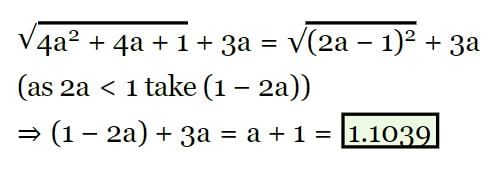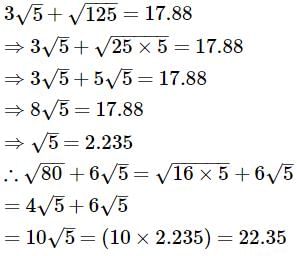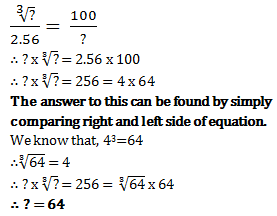All Exams >
CLAT >
4 Months Preparation Course for CLAT UG >
All Questions
All questions of Squares, Square Roots, Cubes, Cube Roots for CLAT Exam
How many natural numbers lie between 92 and 102?
a) 36
b) 27
c) 9
d) 18
Correct answer is option 'D'. Can you explain this answer?
|
|
Sohini Das answered |
Between 92 and 102
Here, n = 9 and n + 1 = 10
∴ Natural number between 92 and 102 are (2 × n) or 2 x 9, i.e. 18.
Here, n = 9 and n + 1 = 10
∴ Natural number between 92 and 102 are (2 × n) or 2 x 9, i.e. 18.
Which of the following is a perfect square number?
- a)222222
- b)23453
- c)1681
- d)1057
Correct answer is option 'C'. Can you explain this answer?
Which of the following is a perfect square number?
a)
222222
b)
23453
c)
1681
d)
1057

|
Shashwat Singh answered |
The answer is 1681 because it is the only number which has it's last digit as a number which a perfect square can have . 9×9=81 the last digit is 1.
Find the perfect square number between 30 and 40.
- a)36
- b)49
- c)25
- d)none of these
Correct answer is option 'A'. Can you explain this answer?
Find the perfect square number between 30 and 40.
a)
36
b)
49
c)
25
d)
none of these
|
|
Amita Verma answered |
Since, 1 x 1 = 1
2 x 2 = 4
3 x 3 = 9
4 x 4 = 16
5 x 5 = 25
6 x 6 = 36
7 x 7 = 49
Thus, 36 is a perfact square number between 30 and 40.
Which of the following would end with digit 1?- a)1232
- b)1612
- c)772
- d)822
Correct answer is 'B'. Can you explain this answer?
Which of the following would end with digit 1?
a)
1232
b)
1612
c)
772
d)
822

|
Sneha Singh answered |
Option B is correct because the unit digit of 161 is 1 and if unit digit of any digit ends with 1 the its square will also end with 1.
Without doing any calculation, find the numbers which are surely perfect squares.- a)441
- b)408
- c)153
- d)257
Correct answer is option 'A'. Can you explain this answer?
Without doing any calculation, find the numbers which are surely perfect squares.
a)
441
b)
408
c)
153
d)
257

|
KS Coaching Center answered |
The perfect squares have 0,1,2,4,5,6 or 9 at their units place.
Therefore153,257 and 408 are surely not perfect squares.
Therefore153,257 and 408 are surely not perfect squares.
Without adding, find the sum. 1 + 3 + 5 + 7 + 9 + 11 + 13
- a)36
- b)49
- c)25
- d)19
Correct answer is option 'B'. Can you explain this answer?
Without adding, find the sum. 1 + 3 + 5 + 7 + 9 + 11 + 13
a)
36
b)
49
c)
25
d)
19

|
Zzz answered |
We have to just add that how many odd no. are ther... moree then we have to take out
Without adding, find the sum. 1 + 3 + 5 + 7 + 9- a)16
- b)36
- c)9
- d)25
Correct answer is option 'D'. Can you explain this answer?
Without adding, find the sum. 1 + 3 + 5 + 7 + 9
a)
16
b)
36
c)
9
d)
25

|
Lakesway Classes answered |
Here, we have to find the sum of first five odd natural numbers.
Therefore, 1 + 3 + 5 + 7 + 9 = (5)2 = 25

- a)2.24
- b)1.24
- c)1.34
- d)2.34
Correct answer is option 'D'. Can you explain this answer?
a)
2.24
b)
1.24
c)
1.34
d)
2.34

|
Pathways Academy answered |
(5.4756)1/2 = 2.34
Can you explain the answer of this question below:
- A:
0.1
- B:
10
- C:
10000
- D:
1000
The answer is C.
0.1
10
10000
1000
|
|
Juhi Desai answered |

Squaring both side,
⇒ 0.000256 x a = 2.56
⇒ a = 2.56/0.000256
⇒ a = 10000
Practice Quiz or MCQ (Multiple Choice Questions) with solution are available for Practice, which would help you prepare for "Square Root and Cube Root" under Logical Reasoning and Data Interpretative. You can practice these practice quizzes as per your speed and improvise the topic. The same topic is covered under various competitive examinations like - CAT, GMAT, Bank PO, SSC and other competitive examinations.Q.
- a)24
- b)12
- c)48
- d)36
Correct answer is 'A'. Can you explain this answer?
Practice Quiz or MCQ (Multiple Choice Questions) with solution are available for Practice, which would help you prepare for "Square Root and Cube Root" under Logical Reasoning and Data Interpretative. You can practice these practice quizzes as per your speed and improvise the topic. The same topic is covered under various competitive examinations like - CAT, GMAT, Bank PO, SSC and other competitive examinations.
Q.
a)
24
b)
12
c)
48
d)
36

|
Shalini Kumar answered |

⇒ x2 = √331776
⇒ x2 = 576
⇒ x = √576
⇒ x = 24
Without adding, find the sum of 1 + 3 + 5 + 7 + 9 + 11 + 13 + 15 + 17 + 19
- a)100
- b)64
- c)49
- d)81
Correct answer is option 'A'. Can you explain this answer?
Without adding, find the sum of 1 + 3 + 5 + 7 + 9 + 11 + 13 + 15 + 17 + 19
a)
100
b)
64
c)
49
d)
81

|
Target Study Academy answered |
Total consecutive odd numbers = 10
Thus n = 10
Therefore sum = n × n
= 10× 10 = 100

- a)0.85
- b)0.72
- c)2.8
- d)0.4
Correct answer is option 'A'. Can you explain this answer?
a)
0.85
b)
0.72
c)
2.8
d)
0.4

|
Pioneer Academy answered |

= (12/11) x (11/15) x (15/14)
= 12/14
= 0.85
What is the least perfect square which is divisible by 2, 4 and 6?
- a)36
- b)64
- c)16
- d)18
Correct answer is option 'A'. Can you explain this answer?
What is the least perfect square which is divisible by 2, 4 and 6?
a)
36
b)
64
c)
16
d)
18
|
|
Preeti Khanna answered |
LCM of 2,4,6= 2×1×2×3=12
Least perfect square which is a multiple of 12 is 36.
Least perfect square which is a multiple of 12 is 36.
Find the least square number (perfect square) which is exactly divisible by each of the numbers 6, 9, 12a)36b)65c)81d)49Correct answer is option 'A'. Can you explain this answer?
|
|
Prachi Sangwan answered |
It should be 36, 24 is not a perfect square!
The square root of 16641 is- a)129
- b)121
- c)211
- d)229
Correct answer is option 'A'. Can you explain this answer?
The square root of 16641 is
a)
129
b)
121
c)
211
d)
229
|
|
Nikita Singh answered |
Step 1:
- We now need to obtain the digital root of the number. Here's how you do it:
- Split the number up and add each digit together:
1 + 6 + 6 + 4 + 1 = 18 - If the answer is more than one digit, you would add each digit of the answer together again:
1 + 8 = 9 - What is the digital root of number 16,641?
Answer: 9
Step 2:
- So now we know the digital root of 16,641 is 9. Is 9 in the list of digital roots that are always a square root (1, 4, 7 or 9)?
- Answer: YES, 9 is in the list of digital roots that are always perfect squares. We can conclude that 16,641 could be a perfect square!
Factoring
- OK, so now we know that 16,641 could be a perfect square. We have to find the factors of the number to be sure.
- Here are all of the factors of 16,641:
(1 x 16,641) (3 x 5,547) (9 x 1,849) (43 x 387) (129 x 129)
Hence the answer is 129.

- a)10
- b)1
- c)0.1
- d)None of these
Correct answer is option 'B'. Can you explain this answer?
a)
10
b)
1
c)
0.1
d)
None of these

|
BT Educators answered |

Squaring both side,
⇒ 0.0576 x a = 0.0576
⇒ a = 1
Find the least number that must be subtracted from 5607 so as to get a perfect square.- a)130
- b)135
- c)131
- d)none of these
Correct answer is option 'C'. Can you explain this answer?
Find the least number that must be subtracted from 5607 so as to get a perfect square.
a)
130
b)
135
c)
131
d)
none of these

|
Sounak Sengupta answered |
Square of 75 is 5625
square of 74 is 5476
so use must get 5476
5607 - x is 5476
x is 131
square root of 5476 is 74
Practice Quiz or MCQ (Multiple Choice Questions) with solutions are available for Practice, which would help you prepare for chapter Squares and Square Roots, Class 8, Mathematics . You can practice these practice quizzes as per your speed and improvise the topic.Q.Which of the following is a perfect square number?- a)222222
- b)23453
- c)1681
- d)1057
Correct answer is 'C'. Can you explain this answer?
Practice Quiz or MCQ (Multiple Choice Questions) with solutions are available for Practice, which would help you prepare for chapter Squares and Square Roots, Class 8, Mathematics . You can practice these practice quizzes as per your speed and improvise the topic.
Q.
Which of the following is a perfect square number?
a)
222222
b)
23453
c)
1681
d)
1057

|
Sanjana Bose answered |
A number is a perfect square (or a square number) if its square root is an integer; that is to say, it is the product of an integer with itself. Here, the square root of 1681 is 41.
Therefore, the square root of 1681 is an integer, and as a consequence 1681 is a perfect square.
As a consequence, 41 is the square root of 1681.
If a number has 1 or 9 in the unit’s place, then it’s square ends in ________.
- a)3
- b)9
- c)1
- d)none of these
Correct answer is option 'C'. Can you explain this answer?
If a number has 1 or 9 in the unit’s place, then it’s square ends in ________.
a)
3
b)
9
c)
1
d)
none of these
|
|
Aarav Sharma answered |
If a number has 1 or 9 in the unit's place, it means that the number ends with either 1 or 9.
Can you explain the answer of this question below:
- A:

- B:
7/36
- C:
36/7
- D:

The answer is c.
7/36
36/7
|
|
Meera Rana answered |

► Using identity, (a-b)2 = a2 + b2 - 2ab
► Here a = √7 and b = 1/√7

= (√7)2 + (1/√7)2 - 2. √7.1/√7
= 7 + 1/7 - 2
= 5 + 1/7
= 36/7
The least perfect square, which is divisible by each of 21, 36 and 66 is:- a)213444
- b)214344
- c)214434
- d)231444
Correct answer is option 'A'. Can you explain this answer?
The least perfect square, which is divisible by each of 21, 36 and 66 is:
a)
213444
b)
214344
c)
214434
d)
231444

|
Ishani Rane answered |
L.C.M of 21,36,66=2772
Now, 2772=2*2*3*3*7*11
Hence to make it a perfect square , it must be multiplied by 7*11
∴ The required number is 2^2*3^3*7^2*11^2
= 213444
2025 plants are to be planted in a garden in such a way that each row contains as many plants as the number of rows. Find the number of plants in each row.
- a)55
- b)65
- c)45
- d)none of these
Correct answer is option 'C'. Can you explain this answer?
2025 plants are to be planted in a garden in such a way that each row contains as many plants as the number of rows. Find the number of plants in each row.
a)
55
b)
65
c)
45
d)
none of these
|
|
Rajeev Kumar answered |
Let the number of rows be x
Thus, the each row contains x plants.
The total number of plants in the garden = number of rows × number of plants in each rows
Thus,
2025=x×x
=>x2 =2025
=>x= 3×3×3×3×5×5
=3×3×5
=45
Thus, there are 45 rows and each row contains 45 plants.
Thus, the each row contains x plants.
The total number of plants in the garden = number of rows × number of plants in each rows
Thus,
2025=x×x
=>x2 =2025
=>x= 3×3×3×3×5×5
=3×3×5
=45
Thus, there are 45 rows and each row contains 45 plants.
Practice Quiz or MCQ (Multiple Choice Questions) with solutions are available for Practice, which would help you prepare for chapter Squares and Square Roots, Class 8, Mathematics . You can practice these practice quizzes as per your speed and improvise the topic.Q.Which of the following is a perfect square number?- a)222222
- b)23453
- c)1681
- d)1057
Correct answer is option 'C'. Can you explain this answer?
Practice Quiz or MCQ (Multiple Choice Questions) with solutions are available for Practice, which would help you prepare for chapter Squares and Square Roots, Class 8, Mathematics . You can practice these practice quizzes as per your speed and improvise the topic.
Q.
Which of the following is a perfect square number?
a)
222222
b)
23453
c)
1681
d)
1057
|
|
Kavya Saxena answered |
The answer is 1681 because it is the only number which has it's last digit as a number which a perfect square can have . 9×9=81 the last digit is 1.
How many numbers lie between square of 12 and 13- a)22
- b)23
- c)24
- d)25
Correct answer is option 'C'. Can you explain this answer?
How many numbers lie between square of 12 and 13
a)
22
b)
23
c)
24
d)
25
|
|
Rhea Reddy answered |
122 = 12*12 = 144
132 = 13*13 = 169
Now numbers are between144 and 169 are:
145, 146, 147,.............168
Total number = 24
So total numbers lies between 144 and 169 is 24
Find the square root of 529.
- a)24
- b)23
- c)25
- d)none of these
Correct answer is option 'B'. Can you explain this answer?
Find the square root of 529.
a)
24
b)
23
c)
25
d)
none of these
|
|
Rajeev Kumar answered |
Square root of 529 is 23
Find the greatest perfect square of 5 digits.- a)99825
- b)99856
- c)90825
- d)90856
Correct answer is option 'B'. Can you explain this answer?
Find the greatest perfect square of 5 digits.
a)
99825
b)
99856
c)
90825
d)
90856

|
Prerna Sen answered |
We know that the largest 5 digit number is 99999. So let us check whether it is a perfect or not ? So here we can see that 99999 is not a perfect square as it leaves 143 as the remainder while finding it s square root. Hence 99856 is a perfect square whose square root is √99856 = 316.
The value of given the value of = 7.28 isa)101.92b)102.86c)101.48d)102.94Correct answer is option 'A'. Can you explain this answer?
|
|
Kendrika answered |
As we know root 53 = 7.28
So
We can write
Root 10388 = root 53×196
= root 53× root 196 ( put the vale of root 53 and root 196)
= 7.28×14
= 101.92 Is the answer .
So
We can write
Root 10388 = root 53×196
= root 53× root 196 ( put the vale of root 53 and root 196)
= 7.28×14
= 101.92 Is the answer .
What is the least number by which 13720 must be divided so that the quotient is a perfect cube- a)4
- b)2
- c)7
- d)5
Correct answer is option 'D'. Can you explain this answer?
What is the least number by which 13720 must be divided so that the quotient is a perfect cube
a)
4
b)
2
c)
7
d)
5

|
Nishant Upadhyay answered |
Write 13720 as product of prime numbers
13720 =2*2*2*7*7*7*5
=(2*2*2)*(7*7*7)*5
Only 5 is isolated
To make 13720 perfect cube we have to divide it with 5
None of the square numbers end with _________ at unit’s place.
- a)3
- b)2
- c)7
- d)2, 3, 7 or 8
Correct answer is option 'D'. Can you explain this answer?
None of the square numbers end with _________ at unit’s place.
a)
3
b)
2
c)
7
d)
2, 3, 7 or 8
|
|
Preeti Khanna answered |
According to the Property 1, A number having 2, 3, 7 or 8 at it's unit's place is never a perfect square. In other words, no square number ebds in 2, 3, 7 or 8.
What will be the number of zeros in the square of 400?- a)4
- b)1
- c)3
- d)2
Correct answer is option 'A'. Can you explain this answer?
What will be the number of zeros in the square of 400?
a)
4
b)
1
c)
3
d)
2
|
|
Rajeev Kumar answered |
Square of 400 = 160000
Hence, the number of zeroes is 4
If 5278 is squared, then what will be at unit place?- a)4
- b)7
- c)6
- d)8
Correct answer is option 'A'. Can you explain this answer?
If 5278 is squared, then what will be at unit place?
a)
4
b)
7
c)
6
d)
8
|
|
Ankita Shah answered |
Understanding the Unit Place of a Square
To determine the unit place of the square of a number, we only need to focus on the unit digit of that number.
Step-by-Step Process
1. Identify the Unit Digit
The number given is 5278. The unit digit is 8.
2. Square the Unit Digit
Now, we calculate the square of the unit digit:
8 * 8 = 64.
3. Find the Unit Digit of the Result
The unit digit of 64 is 4.
Conclusion
Thus, when 5278 is squared, the unit place of the result is 4. Therefore, the correct answer is option 'A'.
Key Points to Remember
- Only the unit digit affects the unit place when squaring a number.
- The process involves squaring the unit digit and then extracting the unit digit from the squared result.
- For 5278, focusing on the unit digit (8) leads to the conclusion that the unit place of 5278 squared is 4.
To determine the unit place of the square of a number, we only need to focus on the unit digit of that number.
Step-by-Step Process
1. Identify the Unit Digit
The number given is 5278. The unit digit is 8.
2. Square the Unit Digit
Now, we calculate the square of the unit digit:
8 * 8 = 64.
3. Find the Unit Digit of the Result
The unit digit of 64 is 4.
Conclusion
Thus, when 5278 is squared, the unit place of the result is 4. Therefore, the correct answer is option 'A'.
Key Points to Remember
- Only the unit digit affects the unit place when squaring a number.
- The process involves squaring the unit digit and then extracting the unit digit from the squared result.
- For 5278, focusing on the unit digit (8) leads to the conclusion that the unit place of 5278 squared is 4.
Of the numbers 0.16,  , (0.16)2 and 0.016, the least is
, (0.16)2 and 0.016, the least is- a)(0.16)2
- b)

- c)0.016
- d)0.16
Correct answer is option 'C'. Can you explain this answer?
Of the numbers 0.16,  , (0.16)2 and 0.016, the least is
, (0.16)2 and 0.016, the least is
a)
(0.16)2
b)
c)
0.016
d)
0.16
|
|
Nishtha Pandey answered |
Yes,
(0.16)^2=0.025
sq root of 0.16=0.4
From all 4 no.
we find that,
0.016 is the least among all.
(0.16)^2=0.025
sq root of 0.16=0.4
From all 4 no.
we find that,
0.016 is the least among all.
The least number by which 12348 must be divided so as to have the quotient as a perfect square.- a)6
- b)7
- c)4
- d)9
Correct answer is option 'B'. Can you explain this answer?
The least number by which 12348 must be divided so as to have the quotient as a perfect square.
a)
6
b)
7
c)
4
d)
9

|
Gowri Chakraborty answered |
12348 ← even number, you can divide it by 2
= 2 * 6174 ← even number, you can divide it by 2
= 2 * 2 * 3087 ← the sum is (3 + 0 + 8 + 7) = 18 ← 18 is divisible by 3 ← you can divide it by 3
= 2 * 2 * 3 * 1029 ← the sum is (1 + 0 + 2 + 9) = 12 ← 12 is divisible by 3 ← you can divide it by 3
= 2 * 2 * 3 * 3 * 343 ← you know that 343 is divisible by 7
= 2 * 2 * 3 * 3 * 7 * 49 ← recall: 49 = 7^2
= 2 * 2 * 3 * 3 * 7 * 7^2
= 2^2 * 3^2 * 7^2 * 7
= (2 * 3 * 7)2 * 7
= 42^2 * 7 ← the number is 7 → 12348/7 = 42^2 ← this is the perfect square
Find the least square number exactly divisible by 8, 9 and 10- a)3200
- b)3500
- c)4000
- d)3600
Correct answer is option 'D'. Can you explain this answer?
Find the least square number exactly divisible by 8, 9 and 10
a)
3200
b)
3500
c)
4000
d)
3600
|
|
Sumit Kr answered |
3600 is the least square number in option which is
divisible by 8,9 and 10..
divisible by 8,9 and 10..
 equals
equals- a)1/48
- b)5/81
- c)516
- d)None
Correct answer is option 'C'. Can you explain this answer?
a)
1/48
b)
5/81
c)
516
d)
None
|
|
Yash Patel answered |
terms after square root is
(15/27 - 5/12) / (4/9)
= 5/16
Find the square root of 729.- a)29
- b)28
- c)27
- d)30
Correct answer is option 'C'. Can you explain this answer?
Find the square root of 729.
a)
29
b)
28
c)
27
d)
30
|
|
Aarav Sharma answered |
The square root of 729 is 27.
What will be the number of zeros in the square of 60?
- a)1
- b)2
- c)3
- d)none of these
Correct answer is option 'B'. Can you explain this answer?
What will be the number of zeros in the square of 60?
a)
1
b)
2
c)
3
d)
none of these

|
Samridhi Patel answered |
Square of 60 is 3600 therefore number of zeroes is 2.
Find the greatest 4-digit number which is a perfect square.- a)9990
- b)9801
- c)9999
- d)none of these
Correct answer is option 'B'. Can you explain this answer?
Find the greatest 4-digit number which is a perfect square.
a)
9990
b)
9801
c)
9999
d)
none of these
|
|
Kavya Saxena answered |
By division method we find the root of 9999 and we get the remainder 198.So subtracting 198 from 9999 we get 9801 as the greatest 4-digit perfect square.
Chapter doubts & questions for Squares, Square Roots, Cubes, Cube Roots - 4 Months Preparation Course for CLAT UG 2025 is part of CLAT exam preparation. The chapters have been prepared according to the CLAT exam syllabus. The Chapter doubts & questions, notes, tests & MCQs are made for CLAT 2025 Exam. Find important definitions, questions, notes, meanings, examples, exercises, MCQs and online tests here.
Chapter doubts & questions of Squares, Square Roots, Cubes, Cube Roots - 4 Months Preparation Course for CLAT UG in English & Hindi are available as part of CLAT exam.
Download more important topics, notes, lectures and mock test series for CLAT Exam by signing up for free.

Contact Support
Our team is online on weekdays between 10 AM - 7 PM
Typical reply within 3 hours
|
Free Exam Preparation
at your Fingertips!
Access Free Study Material - Test Series, Structured Courses, Free Videos & Study Notes and Prepare for Your Exam With Ease

 Join the 10M+ students on EduRev
Join the 10M+ students on EduRev
|

|
Create your account for free
OR
Forgot Password
OR
Signup to see your scores
go up within 7 days!
Access 1000+ FREE Docs, Videos and Tests
Takes less than 10 seconds to signup


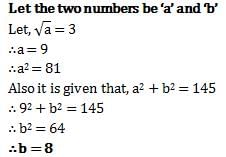
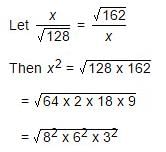
 is:
is:
